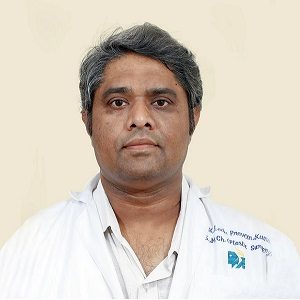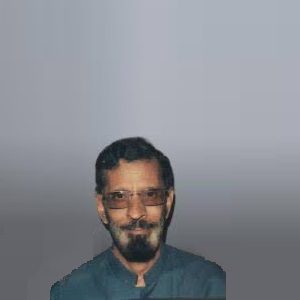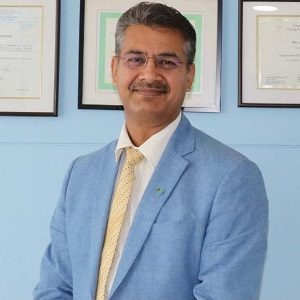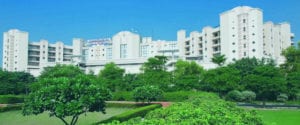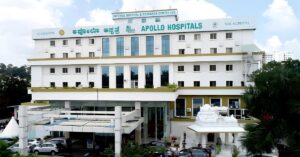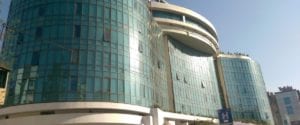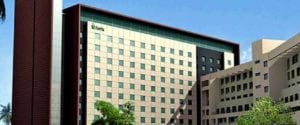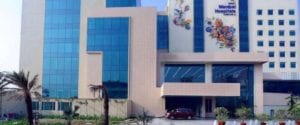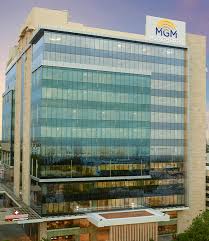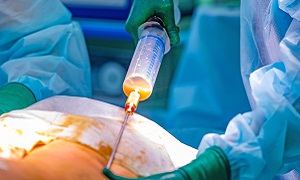Best Doctors in India for Fat Grafting
- Plastic Surgeon and Cosmetic Surgeon, Chennai, India
- Over 22 years’ experience
- Apollo Hospitals Greams Road
Profile Highlights:
- Dr. Leela Praveen Kumar is one of the top Plastic Surgeons in Chennai with more than 22 years of dedicated experience.
- The doctor is frequently visited by the patients for Breast implants, Vaser Liposuction, rhinoplasty, facelift, Breast Reduction, Bariatric Surgery, Microsurgery, Body contouring, Hand surgery, and Onco Reconstruction.
- Dr. Leela Praveen Kumar also manages a non-Surgical fat reduction procedure, known as Cryolipolysis.
- Plastic Surgeon and Cosmetic Surgeon, Chennai, India
- Over 40 years’ experience
- Apollo Hospitals Greams Road
Profile Highlights:
- Dr. Sundararajan M S is one of the best Plastic Surgeons in India, having practiced for more than 40 years.
- The doctor offers lipo filling, body contouring, non-Surgical facelift, tummy tuck, implants, etc.
- Dr. Sundarajan bagged the Best paper award in 2008 & 2013 and the other Gold Medal for his contribution to the field.
- Plastic, Aesthetic and Reconstructive Surgeon, Gurugram, India
- 25 + years’ experience
- Medanta-The Medicity, Gurgaon
Profile Highlights:
- Dr. Aditya Aggarwal is a distinguished plastic surgeon with a career spanning over 25 years, currently serving as the Vice Chairman of the Department of Plastic, Aesthetic, and Reconstructive Surgery at Medanta The Medicity.
- Dr. Aggarwal’s expertise in cosmetic and reconstructive surgery has earned him both national and international acclaim.
- Dr. Aggarwal’s medical journey began with training at the prestigious IMS BHU Varanasi and KGMC Lucknow (now KGMU), followed by advanced fellowships in Taiwan, Japan, the United Kingdom, and Germany.
Best Hospitals in India for Fat Grafting
Hospital Highlights:
- Apollo Hospitals is a private healthcare group in India, with its headquarters based in Chennai. Established in 1983 by Dr. Prathap C. Reddy, the group offers a wide range of medical treatments and services across various specialties.
- It is renowned for emphasizing innovation and utilizing cutting-edge medical technologies into patient treatment.
- Known as India’s first corporate hospital, Apollo Hospitals is often credited for pioneering the private healthcare revolution in the country.
- With clinics and hospitals located all throughout India, Apollo Hospitals is a nationwide healthcare organization. Its presence can also be found in foreign countries.
- Preventive health examinations, medical and surgical treatment, and diagnostic centres are just a few of the services that the Apollo group provides.
- The group has several centres of expertise, including Cardiac Sciences, Neurosciences, Orthopedics, Emergency Care, Cancer Care, and Organ Transplantation.
- City: Chennai, India
Hospital Highlights:
- RIMC is a multi-specialty hospital in a sprawling area of 36 acres located in Chromepet, Chennai, Tamil Nadu, India.
- The facility has 450 beds including 130 critical care beds, 9 operating rooms, modern reference laboratories and radiology services, and is conveniently located near road, rail and air transportation.
- RIMC is led and managed by world-renowned physicians committed to healthcare.
- RIMC offers the broadest range of clinical care, education, and research. The hospital offers state-of-the-art technology and modern treatment facilities designed to provide health care at an affordable cost.
- Rela Institute is driven by patient needs, comfort and confidence.
- City: New Delhi, India
Hospital Highlights:
- Fortis Hospital in Shalimar Bagh is a multi-super specialty hospital that strives to provide world-class patient care by leaving no stone unturned.
- Fortis, Shalimar Bagh, with 262 beds and a 7.34-acre footprint, provides the best level of medical care through its team of doctors, nurses, technicians, and management professionals.
- City: Bengaluru, India
Hospital Highlights:
- Established in 2007, the Apollo Hospitals Bangalore is a 300-bed multispecialty hospital situated in Bannerghatta Road, Bangalore.
- Equipped with the state-of-the-art technology, it is a leading hospital dedicated to providing healthcare needs to patients with compassion and expertise.
- It is the first hospital to have completed the highest number of Robot Assisted Heart Surgeries in India.
- Over the years, it has successfully conducted some of the rarest medical procedures such as spinal angiolipoma excision, autologous chondrocyte implantations, and tibial tuberosity shift with MPSL reconstruction.
- The Apollo Hospitals Bangalore has the reputation of performing the greatest series of airway stents in the country.
- Additionally, the hospital is known for providing comprehensive treatment in specialties such as gastroenterology, urology, gynecology, oncology, colorectal surgery, etc.
- The “The Minimal Access Surgery Centre” (MASC), one of Apollo Hospitals, Bangalore’s premier Centres of Excellence, is devoted to the use of minimally invasive surgical procedures.
- In 2013, THE WEEK-A C Nielsen, Best Hospital Survey ranked Apollo Hospitals Bangalore as the 2nd best multi-speciality hospital in Bangalore.
- City: Mumbai, India
Hospital Highlights:
- Gleneagles Global Hospital The 450-bed facility comprises of 17-stories, housing state-of-the-art infrastructure, and advanced medical care facilities.
- The hospital offers end-to-end clinical, surgical, and diagnostic services. It is equipped with a team of eminent medical professionals aided by qualified nurses and medical staff
- The Hospital offers advanced Endoscopic procedures, Hepatobiliary and Liver Surgeries, Surgical and Medical Gastroenterology, Bariatric Surgery, and Robotic surgery.
- The hospital is a center of excellence for Orthopedics, Joint Replacement, Knee Replacement, and Hip Replacement surgery.
- City: Hyderabad, India
Hospital Highlights:
- CARE Hospitals were established in the year 2000, by CARE Group.
- The multispecialty hospital has 435 beds, including 120 critical care beds, with an annual inflow of 180000 outpatients and 16,000 in-patients.
- The hospital provides specialty medical services in Cardiology, Cardiothoracic Surgery, Pediatric Cardiology, Pediatric Cardiothoracic Surgery, Neurology, Neurosurgery, Nephrology, and Urology.
- The hospital has the first dual source, 128 slice CT scanner (for high precision cardiac imaging) – the first of its kind in south India.
- The hospital offers a wide range of accommodation facilities for the convenience of its varied patient base, ranging from general wards to super deluxe rooms.
- City: Mumbai, India
Hospital Highlights:
- Fortis Hospital in Mulund is a 315-bed multi-speciality tertiary care hospital with five JCI accreditations that offers a wide variety of diagnostic and treatment services. The Fortis Hospital in Mulund delivers patient-centred treatment with cutting-edge technology, highly skilled and experienced surgeons, and paramedical staff.
- This institution houses Maharashtra’s largest multi-organ transplant centre. It is also the first heart transplant centre in western India to conduct 100 or more consecutive heart transplants in under four years. It is the only hospital in the city to have multi-organ transplants and has handled the youngest patient for angioplasty. Fortis Hospital Mulund now boasts the first advanced surgical robot in central Mumbai.
- Cardiology and heart surgery, urology, nephrology, neurosciences, orthopaedics, digestive care, emergency and critical care, and maternity care are among the services provided by the hospital.
- City: New Delhi, India
Hospital Highlights:
- Manipal Hospitals, Dwarka, is a super-specialty hospital in Dwarka, New Delhi, which is a part of Manipal Hospitals Group.
- The hospital aims to provide the best treatment on par with international standards at a fraction of the cost.
- Equipped with 380 beds, the hospital is also one of the new age hospitals which are equipped fully with state-of-the-art infrastructure, cutting-edge technology as well as the latest and advanced clinical practices. The hospital also has 13 modular Operation theatres with 118 beds which are solely meant for critical care.
- The hospital comprises internationally acclaimed doctors and highly professional and experienced hospital and medical staff who are able to provide preventive, therapeutic, and diagnostic services all under one roof.
- City: Chennai, India
Hospital Highlights:
- Located in Chennai, India, MGM Healthcare is a top multispecialty hospital that provides all medical services under one roof.
- Since its founding in 2019, MGM Healthcare has quickly become a leading national referral centre, creating several innovative flagship initiatives.
- MGM Healthcare combines next-generation medical and digital technologies to provide better patient results.
- With 12 centres of excellence, more than 400 inpatient beds, 100 intensive care unit beds, and 24/7 emergency care, MGM Healthcare leaves no chance in redefining the patient experience in Chennai.
- MGM Healthcare boasts 250+ expert doctors across 30+ departments, including Cardiology, Pulmonology, Neurology, Obstetrics & Gynaecology, and more.
- They house 12 specialized Centres of Excellence, including Neurosciences, Orthopaedics, and Multi-Organ Transplantation.
- Their team of doctors, nurses, and paramedics works together to give every patient individualized treatment.
Hospital Highlights:
- Lilavati Hospital & Research Centre is India’s premier multi-speciality tertiary care hospital and has been recognised as a global medical excellence centre.
- Lilavati Hospital & Research Centre has built an unrivalled level of trust with its patients over the years, thanks to a solid foundation that comprises cutting-edge facilities, the best medical competence, research, education, and charity endeavours.
- The hospital is quite proud of the fact that it now serves patients from all kinds of backgrounds, not just from the United States but from all around the world.
- The hospital has a total of 323 beds, one of the largest Intensive Care Units (ICUs), 12 Operation Theatres with modern amenities, over 300 consultants, and almost 1,800 personnel.
FAT GRAFTING
Fat Grafting also referred to as fat transfer, is a procedure for transferring fat from one area of the body to a different area. The goal of this procedure is to improve or augment the area where the fat is injected.
The technique has been used since the 1990s by plastic surgeons for improving and enhancing the appearance of the face, hands, breasts, feet, etc. The procedure also has been shown to have benefits in the healing of wounds and scars.
Fat grafting procedures date back to the 19th century, though during the next century, it had quite a lot of trouble gaining acceptance due to the complications that accompanied the procedure since modern liposuctions had not yet been developed. Today, this procedure is well-established as during the 1990s, several papers were published where standardized techniques for fat extraction, processing and infection were published.
Purpose
Fat grafting can be done for multiple purposes:
Facial Face Grafting- Human faces tend to develop wrinkles over time due to various reasons. Facial fat grafting can help one to overcome the effects of this natural process.
Breast Reconstruction- In the breasts, fat grafts can be used for correcting any deformities along the contour lines such as those which can arise following partial mastectomies or lumpectomies.
Post-traumatic fat grafting- Sometimes, voids are generated which create deformities in various parts of your body after a trauma or surgery. This can happen after neurosurgery. Fat grafting may be used to correct any such defects that generally occur in the legs, arms, or the skull.
Fat grafting has a few advantages:
- The procedure uses your own tissue instead of using an implant.
- Fat can be removed from a part of your body, where you don’t want it.
Preparation
Your surgeon will first need to perform a physical exam to determine your fitness for this procedure. He/she will also answer any questions that you might have and also examine your medical history. He/she might also need to take photos.
He/she might ask you to:
- Stop smoking at least six weeks before the procedure to avoid poor wound healing and scarring.
- Avoid taking certain medications.
- Maintain proper hydration
- Arrange for someone to drive you home safely after the procedure is complete
Procedure
Your procedure may be performed in a hospital or a surgical center. How long the procedure takes generally depends on how much fat needs to be removed, and the number of liposuction sites. For example, you will need less fat for facial fillers as compared to your breasts or buttocks.
Local anesthesia is generally used so that you will not be feeling any pain during the procedure.
The procedure will involve harvesting fat from one part of your body, after which it will be washed, purified, and injected carefully into the areas that need the augmentation. The fat grafting procedure might be required several times before one can achieve the desired results.
First, a site is selected for fat removal. This site is then injected with a local anesthetic. Then your surgeon creates a small incision in the area for fat removal and with the help of a sterile technique, the cannula is connected to a syringe for carefully extracting fat.
After enough fat is obtained from the donor area, the surgeon processes it to prepare the fat cells for small syringes that are going to be used for fat injection.
The area which will receive the graft is then going to be prepared. Your surgeon will need to insert a needle or cannula into the incision point of the area receiving the graft.
Each time the cannula or needle is withdrawn, a line of fatty tissue parcels is carefully deposited. This process is continued until the desired correction has been made and a grid of grafted fat has been created.
There are some surgeons who might recommend massaging the grafted areas as this can create a satisfactory contour. After the procedure, the surgeon will most likely place a bandage or dressing over the grafted area.
Aftercare & recovery
After the procedure, you should discuss with your doctor how long will it take for you to recover. Ask him/her when it is okay for you to resume your normal activities. You will also receive a few detailed instructions regarding your post surgical care.
The treated areas will be rather swollen immediately after the procedure, especially the lips if they were treated. It is therefore, quite important to use a cold pack and compress it in the first few hours so that the swelling can be minimized.
The swelling may increase till the third day, but after that, it should gradually subside. After around ten days patients generally feel confident about going out and resuming their normal social lives. If any bruises had developed, they might remain visible for some time, but with makeup, they can be hidden.
It is advisable for patients to have a check-up with the surgeon after five to seven days and again after three weeks.
How long the fat grafting lasts will depend on the surgeon’s skills, how the fat was harvested and purified and how and where it was injected. For the procedure to be a success, it is important that it is performed by a surgeon with proper skill and experience.
Risks
Though significant complications are rare, they can include:
- Adverse reaction to the anesthesia
- Hematoma or seroma (an accumulation of blood or fluid under the skin that can require removal)
- Infection
- Damage to underlying structures
- Changes in sensation
- Scarring
- Allergic reactions
- Unsatisfactory results that may lead to the requirement of additional procedures

